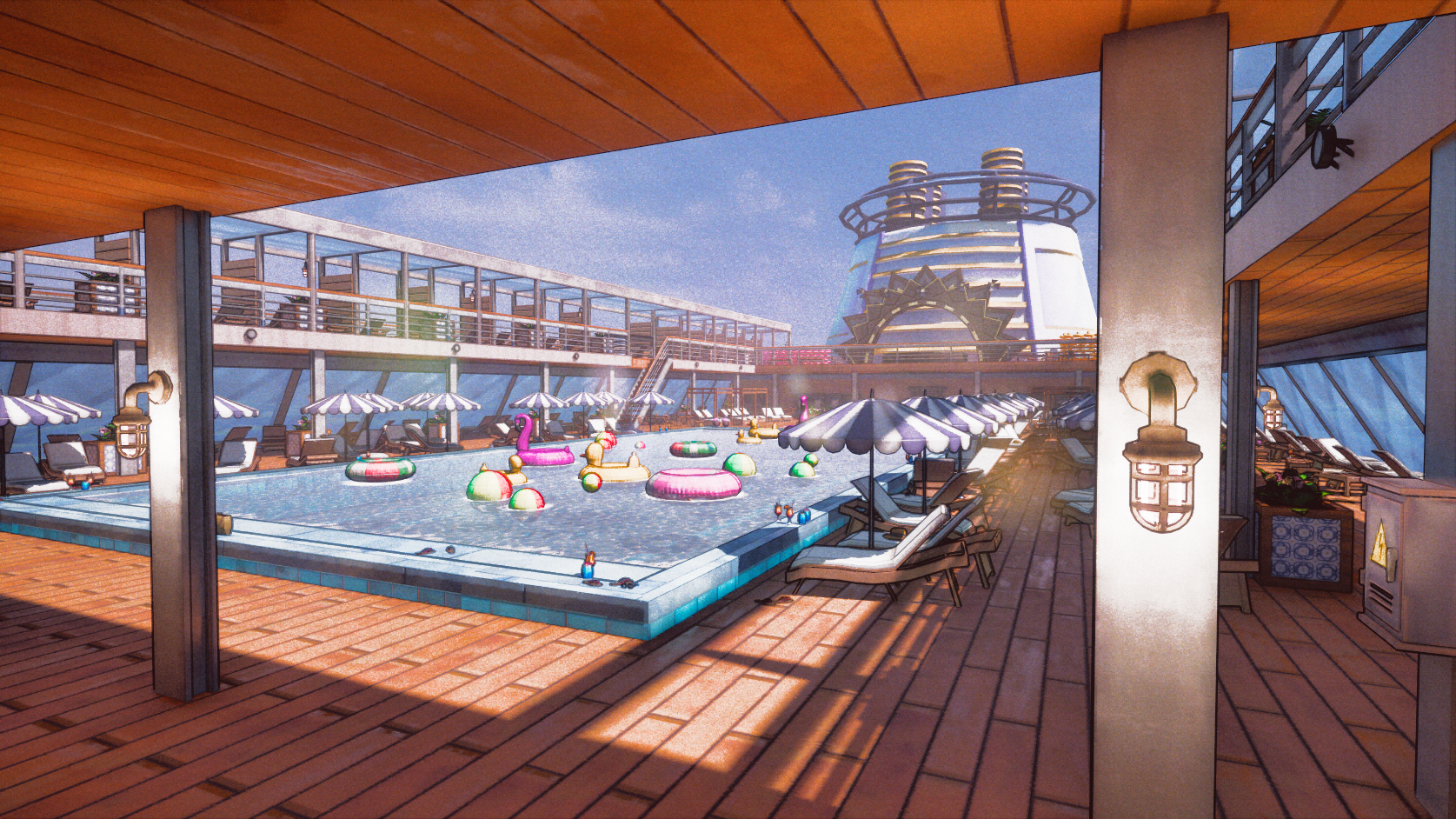
Reel Run
Reel Run is an action 3D Beat ‘em Up made using Unreal Engine 5.4 by a team of 12 people, including programmers, artists, and designers. This project will last 32 weeks and is currently a work in progress.

Western Environment
There were multiple cases where I had to create various types of assets, not just modular kits for buildings but organic models like rocks for a cave environment.
With western environments, we had a strong emphasis on creating a space that truly felt like a western film as you are playing through it. I took a lot of inspiration from various wooden types of materials and style of interior design during the 19-20th century to find design prominent in western films.
This is an example of some modular assets used to build the interior of the train level. We used 3 Trim Sheets to texture the assets, and the kit consisted of 13 different meshes. This approach proved to be very efficient for how we work, being able to push out lots of models whilst improving texture streaming performance by calling only a few materials.
Several small, unique assets would require more attention to detail. Those were textured either individually or would be reusing trim or tillable textures created for other purposes to save time in asset creation.

Horror Environment
There were several different areas that would become key points on the player's critical path. We made sure to concept well on these locations and give them a unique look that gives the player something new every time. We knew that our location was a campground in the 80s, so we did thorough research to see what style of campgrounds were built. After the research was done, I started making assets to build this world.
The Horror Level Environment was a challenge to make. With our concept of it being an open world level, allowing the player to explore, we knew we were aiming at a higher amount of assets than for the previous level. We started by finding a theme that we liked that would set the visual tone for the level, and we started working towards creating that vision.
This is an example of one modular kit that we used for our Firewatch tower. It was textured using only a single trim sheet that would prove useful for us, as it would cover 70% of the level structures. I used a technique of kitbashing much more on this kit, finding it to be way more effective than building every modular piece from the ground up. It allowed us to get an overall cohesive look and to push out more than a 100+ assets in a span of few weeks

Romance Enviornment
One of the key challenges I faced during the creation of the Romance Environments was foliage. We had an idea on how to make it, but were not sure on the visual style. The team agreed on a visual style that looks like it was drawn with a marker, which would bring a subtle juxtaposition to other textures, thus allowing the environments to stand out, achieving that dreamy feel.
With the skills gained from the past two levels, we were able to find a style that would help bring the vision of a romantic cruise together. Mixing stylized techniques of texturing to make sure that the place feels real, but at the same time not, we were able to achieve that magical look. Being efficient in the way I create modular kits and assets, I was able to utilize a mix of techniques to speed up my workflow, allowing for more room to make handpainted assets.

Shader Materials
Early in the stage of production, from experience, I know how beneficial it would be to have a shader that would cover a large portion of our assets, I programmed the logic behind basic texture map implementation for AORMN (Albedo, Occlusion, Roughness, Metallic, Normal) with parameters that would allow to adjust them, and overlay more maps to get better detail. This significantly improved the art team’s ability to easily adjust models so that they fit better in the environment.
Master Material
We faced some optimization issues in large areas of the levels with multiple assets. I used the GPU and CPU trace in Unreal Engine to understand the next steps we have to take to optimize our game better. It has helped us a lot in understanding what processes were taking up a lot of computing power, and we were able to eliminate them so that the game runs at 60 frames per second constantly.
I found the need to create a triplanar material when we were faced with a decision to either create a modular kit with assets, or be able to use the meshes used in the blockout stage. Having this material allowed us to much more easily cover large flat surfaces in the levels without worrying about creating more assets. I found that it was beneficial to our production schedule as it opened up opportunities to work on other things, saving time, whilst not having much of a performance hit.
Reel Run was most certainly one of the largest projects I was able to take part in. It proved to have multiple challenges that we faced during production, which we successfully able to solved. I have understood techniques like kit bashing and using trim sheets at a much higher level, and I can make good judgment calls on how to lay out my work process better to reach a higher number of assets I can make without it affecting the quality.









